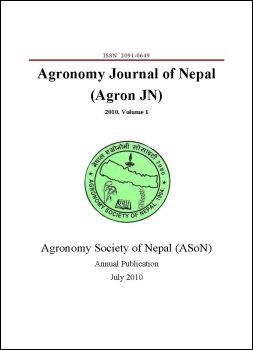Biophysical and socio-economic tools for assessing soil fertility: A case of western hills, Nepal
DOI:
https://doi.org/10.3126/ajn.v1i0.7536Keywords:
Soil fertility, biophysical and socio-economic tools, participatory methodsAbstract
The middle mountain region of Nepal, which occupies some 30% of the total land, is the homeland of 45% of the total population, with agriculture being the main source of their livelihoods. Hill farming is primarily based on organic manure with livestock, forest and crops being major components of an integrated system. The aim of this study is to develop and promote improved methods for research and development organizations to identify cost-effective and appropriate soil fertility management strategies through; providing an improved understanding of the biophysical and socio-economic factors affecting the adaptability of sustainable soil management strategies in hillside systems, developing methodologies for evaluating soil fertility technologies and management systems for differently resource farmers in different farming systems, and strengthening the capability of local professionals in collaborating institutions to provide useful information to farmers. The work is placing emphasis on promoting cost-effective methods of soil fertility management, building on farmers' own knowledge and systems. Participatory techniques have been used for gaining a better understanding of fertility indicators, trends and existing soil management practices during 2000/01 in the western hills of Nepal. Farmers are now concerned that increasing amounts of chemical fertilizer at increasingly higher cost have to be applied, soils are becoming “harder” and production is declining. As a result farmers in four agro-ecological zones opted to either test methods for “improving” the quality of farm yard manure (FYM), or “improve” crop residue management. Early results show that through covering the FYM with black plastic sheets, yield increases of over 30% can be achieved. The use of participatory farm management techniques is providing a basis for local NGOs and farmers to evaluate their own experiments and develop soil fertility technologies and systems for their environments.
DOI: http://dx.doi.org/10.3126/ajn.v1i0.7536
Agronomy Journal of Nepal (Agron JN) Vol. 1: 2010 pp.1-9
Downloads
Downloads
Published
How to Cite
Issue
Section
License
ASON permits for free use, distribution and reproduction in any medium if the original work is properly cited and not used for commercial purposes.




